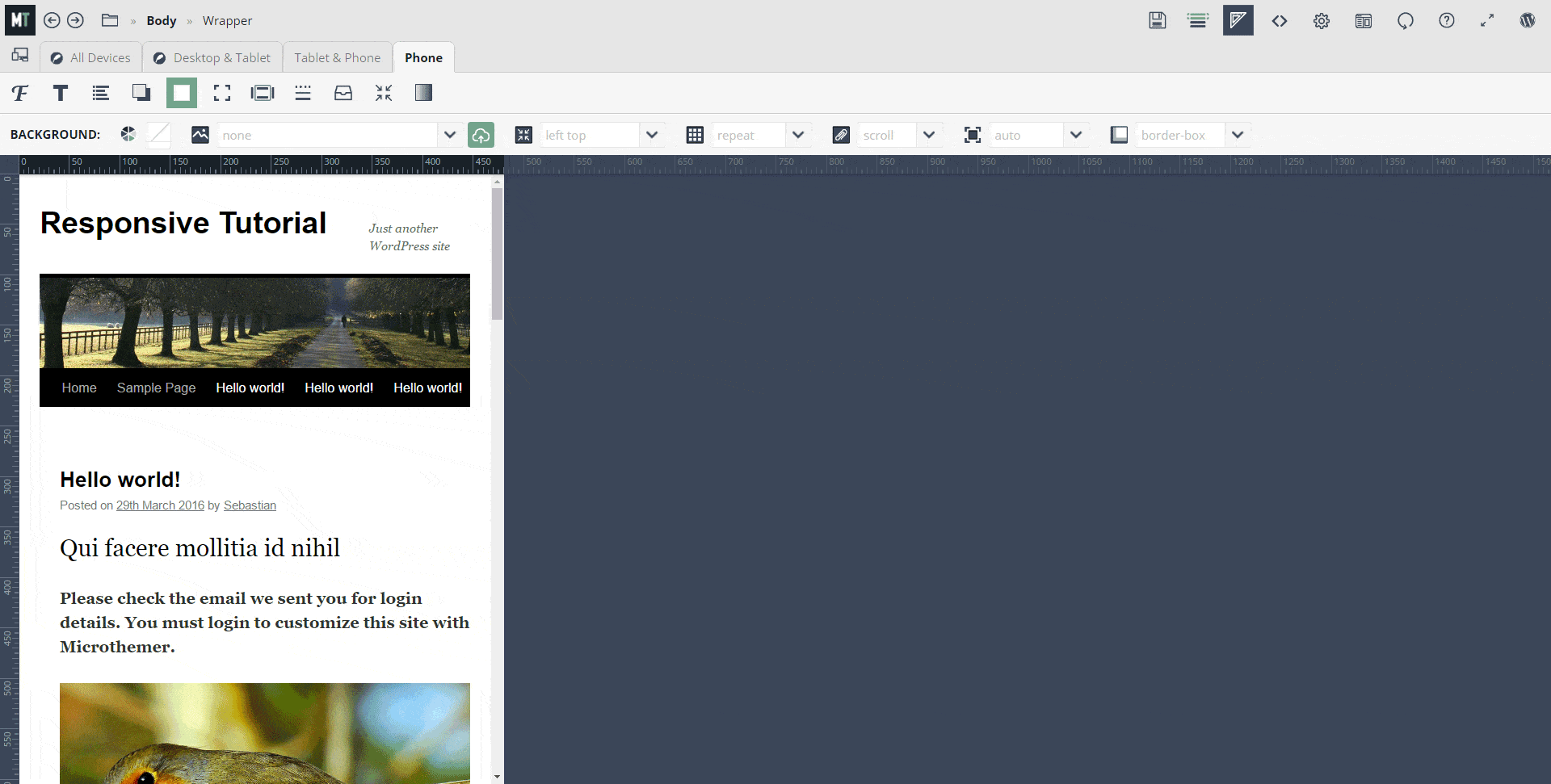

MathML - Writing mathematics with MathML.Performance - Making websites fast and responsive.CSS and JavaScript accessibility best practices.Accessibility - Make the web usable by everyone.CSS property compatibility table for form controls.Adding features to our bouncing balls demo.
#Responsive layout css code
#Responsive layout css full
While the default responsive behavior may sound like no solution is needed, long lines of text displayed full screen on a wide monitor can be difficult to read. If you create a web page containing only HTML, with no CSS, and resize the window, the browser will automatically reflow the text to fit the viewport. HTML is fundamentally responsive, or fluid. To understand the fundamental purposed and CSS features used to implement responsive designs. Introduction to HTML), and an idea of how CSS works (study In this article, we'll help you understand some techniques that can be used to master it. It is the way to design for a multi-device web. Responsive web design (RWD) is a web design approach to make web pages render well on all screen sizes and resolutions while ensuring good usability. Solve common problems in your JavaScript code.Express Tutorial Part 7: Deploying to production.Express Tutorial Part 6: Working with forms.Express Tutorial Part 5: Displaying library data.Express Tutorial Part 4: Routes and controllers.Express Tutorial Part 3: Using a Database (with Mongoose).Express Tutorial Part 2: Creating a skeleton website.Express Tutorial: The Local Library website.Setting up a Node development environment.Express web framework (Node.js/JavaScript).Express Web Framework (node.js/JavaScript).Django Tutorial Part 11: Deploying Django to production.Django Tutorial Part 10: Testing a Django web application.Django Tutorial Part 9: Working with forms.Django Tutorial Part 8: User authentication and permissions.Django Tutorial Part 7: Sessions framework.Django Tutorial Part 6: Generic list and detail views.Django Tutorial Part 5: Creating our home page.Django Tutorial Part 4: Django admin site.Django Tutorial Part 2: Creating a skeleton website.Django Tutorial: The Local Library website.Setting up a Django development environment.Server-side website programming first steps.Setting up your own test automation environment.Building Angular applications and further resources.Advanced Svelte: Reactivity, lifecycle, accessibility.Dynamic behavior in Svelte: working with variables and props.Vue conditional rendering: editing existing todos.Adding a new todo form: Vue events, methods, and models.Ember Interactivity: Footer functionality, conditional rendering.Ember interactivity: Events, classes and state.Ember app structure and componentization.

React interactivity: Editing, filtering, conditional rendering.Understanding client-side web development tools.



 0 kommentar(er)
0 kommentar(er)
